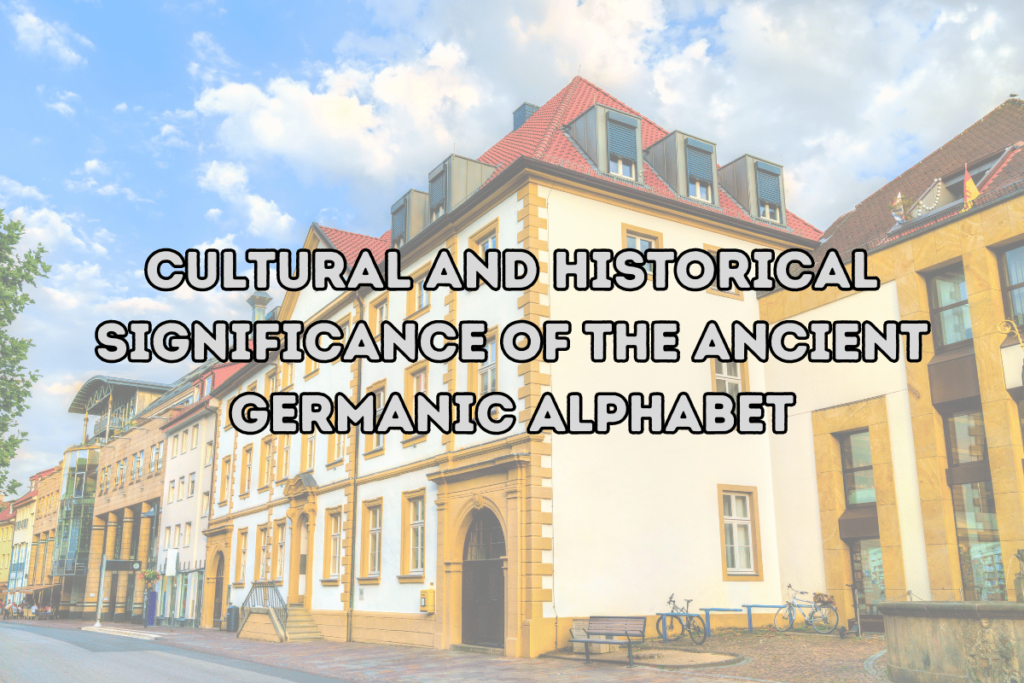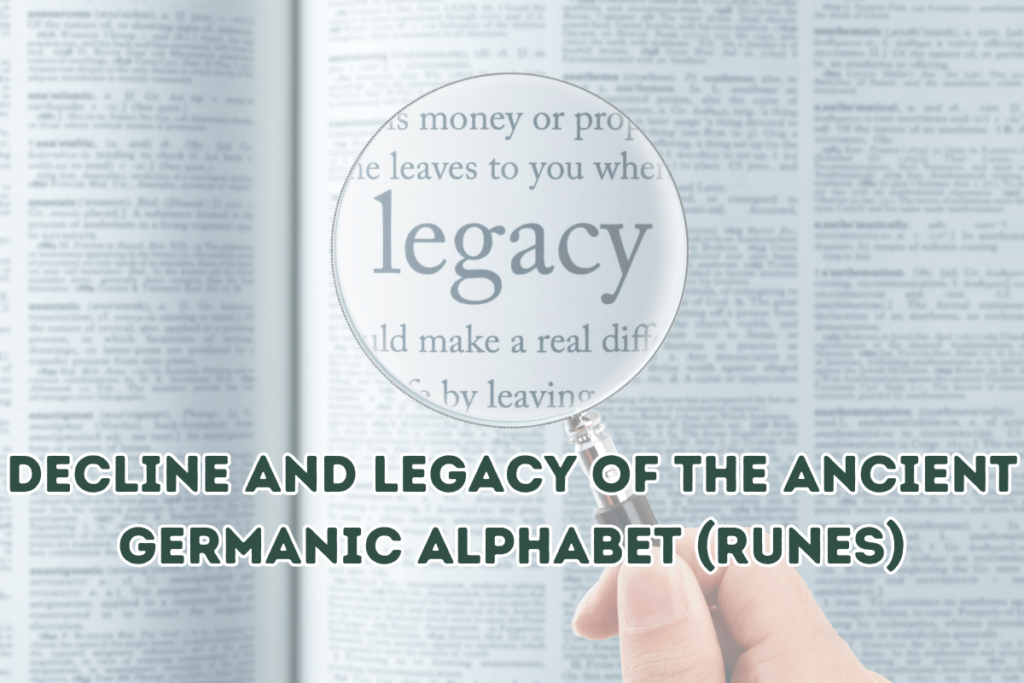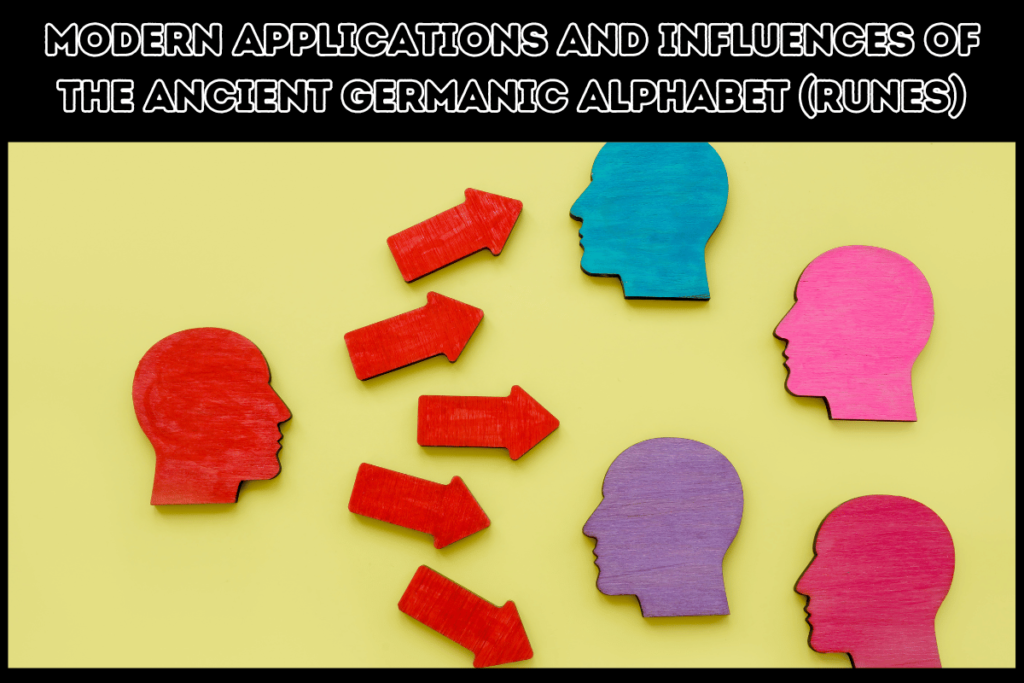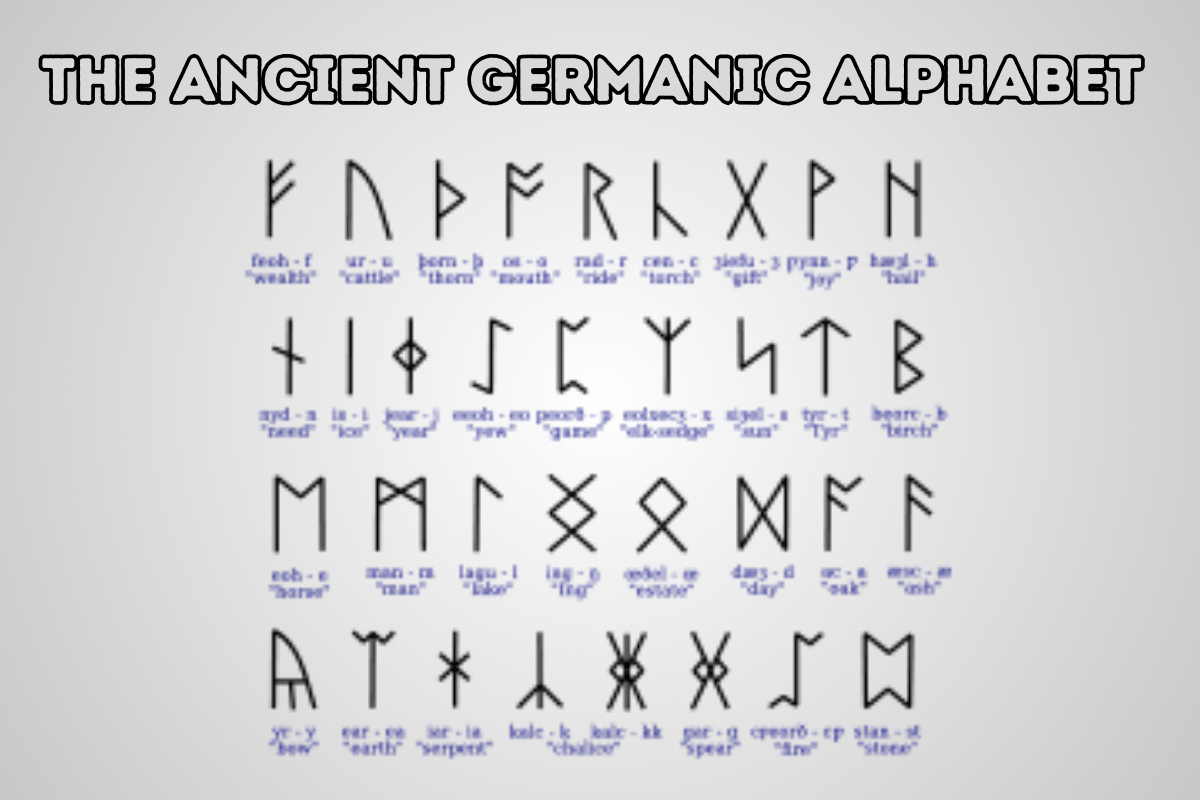Introduction to the Ancient Germanic Alphabet (Runes)
- The ancient Germanic alphabet, known as the runic alphabet or Futhark, originated from the Elder Futhark, a writing system developed by the Proto-Germanic tribes around the 1st century CE.
- Runes were not merely letters but symbols imbued with cultural, religious, and magical significance.
- Runic inscriptions have been found on various artifacts, including stones, metal objects, and wooden items, providing valuable insights into the history, languages, and beliefs of the Germanic tribes.
- The runic alphabet underwent changes and regional variations over time, giving rise to different runic scripts, such as the Younger Futhark, Anglo-Saxon Futhorc, and Dalecarlian Runes.
- With the spread of Christianity and the adoption of the Latin alphabet, the use of runes gradually declined in most Germanic-speaking regions. Still, they continued to be employed for specialized purposes and in certain areas, such as Scandinavia and Iceland.
- In modern times, runes have experienced a revival of interest, with scholars, artists, and enthusiasts exploring their historical, linguistic, and cultural significance.
Read More Articles: Reading Goals for Students: A Comprehensive Guide for Educators
Origins and Evolution
The ancient Germanic alphabet, known as the runic alphabet or Futhark, emerged from the Elder Futhark, a writing system developed by the Proto-Germanic tribes around the 1st century CE. The Elder Futhark consisted of 24 runes, each representing a phonetic sound and imbued with symbolic and magical significance. Over time, the runic alphabet underwent changes and regional variations, giving rise to different runic scripts, including the Younger Futhark, Anglo-Saxon Futhorc, and Dalecarlian Runes.
Cultural and Historical Significance of the Ancient Germanic Alphabet
The ancient Germanic alphabet, known as the runic alphabet or Futhark, held immense cultural and historical significance for the Germanic-speaking peoples. Runes were not merely a means of communication; they were deeply entwined with the culture, beliefs, and traditions of the Germanic tribes.
Cultural Significance
- Symbolic and Ritualistic Uses: Runes were believed to possess magical and symbolic powers. They were used in rituals, divination, and protective charms. Each rune had its unique meaning and associations, and runemasters were highly respected figures in Germanic society.
- Preservation of Traditions: Runic inscriptions served to preserve cultural traditions, myths, and legends. They recorded essential events, genealogies, and laws, ensuring their transmission across generations.
- Artistic Expression: Runes were often used for decorative purposes, adding a creative element to weapons, jewelry, and other objects. The intricate designs and patterns created using runes showcased the creativity and craftsmanship of the Germanic peoples.
Historical Significance
- Insights into Germanic History: Runic inscriptions provide valuable historical information about the Germanic tribes. They shed light on their migrations, settlements, political structures, and social customs.
- Linguistic Evidence: Runes are a rich source of linguistic data, helping scholars reconstruct the development of Germanic languages and trace their origins.
- Historical Documentation: Runic inscriptions have been found on various artifacts, including weapons, coins, and monuments. These inscriptions document historical events, battles, and individuals’ lives, offering firsthand accounts of the past.
Specific Examples of Cultural and Historical Significance
- The runestone of Rök in Sweden, dating back to the 9th century, is one of the longest and most elaborate runic inscriptions known. It contains a complex narrative involving gods, heroes, and historical events.
- The Lindholm amulet, a small gold pendant from Denmark, bears a runic inscription that invokes the protection of the gods Thor and Odin.
- The Codex Runicus, a 13th-century manuscript, contains a collection of runic poems and magical formulas, providing insights into the beliefs and practices of the Germanic peoples.
The ancient Germanic alphabet played a multifaceted role in the culture and history of the Germanic tribes. Runes were a writing system and a means of expressing cultural identity, preserving traditions, and documenting historical events. The study of runes provides a valuable window into the rich and complex world of the ancient Germanic peoples.
Linguistic and Phonetic Features of the Ancient Germanic Alphabet
Phonetic Representation
Each rune in the runic alphabet corresponds to a specific phonetic sound in the Germanic languages. The runes were designed to represent the sounds of the spoken language, allowing for the transcription of words and messages.
Symbolic and Magical Meanings
In addition to their phonetic value, many runes had symbolic and magical associations in ancient Germanic culture. The names of the runes often had meanings that went beyond their phonetic significance, relating to concepts such as strength, protection, or fertility.
Variations and Adaptations
Over time, the runic alphabet underwent changes and adaptations as it spread across different regions and was influenced by other writing systems. Variations in the forms and sounds of the runes can be observed in different runic scripts used by various Germanic tribes.
Phonological Shifts
Runes also provide evidence of phonological shifts and changes in the Germanic languages over time. By studying runic inscriptions, linguists can trace the development of sound changes and dialectal differences within the Germanic language family.
Regional Differences
Different Germanic tribes and regions used slightly different versions of the runic alphabet, leading to regional variations in the form and usage of the runes. These differences reflect the linguistic diversity and cultural distinctiveness of the Germanic-speaking peoples.
Influence on Language and Culture
The runic alphabet not only served as a writing system but also profoundly impacted the language, culture, and identity of the Germanic tribes. Runic inscriptions provided a means of communication, artistic expression, and religious practice, leaving a lasting imprint on the historical record.
Overall, the linguistic and phonetic features of the ancient Germanic alphabet highlight its importance as a written form of expression that captured the sounds, meanings, and symbolic values of the Germanic languages and cultures of the past.
Decline and Legacy of the Ancient Germanic Alphabet (Runes)
Gradual Decline:
With the spread of Christianity and the adoption of the Latin alphabet in many Germanic-speaking regions, the use of runes gradually declined. With its more extensive character set and established use in religious and administrative contexts, the Latin alphabet became the dominant writing system in most areas of Europe.
Continued Usage in Specific Regions:
Despite the decline in widespread use, runes continued to be employed in specific regions and contexts. Notably, in Scandinavia and Iceland, runes remained in use for centuries after the introduction of the Latin alphabet, often for specialized purposes such as inscriptions on rune stones and magical practices.
Preservation and Revival Efforts:
Interest in runes and runic inscriptions has been revived in modern times, driven by historical, linguistic, and cultural enthusiasts. Scholars and researchers continue to study runic inscriptions to gain insights into the ancient Germanic peoples’ history, languages, and beliefs.
Contemporary Influences and Adaptations:
Runes and runic symbols continue to be used in contemporary contexts, including literature, art, popular culture, and neo-pagan or Heathen religious practices. Runes’ aesthetic and symbolic appeal have led to their incorporation into jewelry, tattoos, and other forms of artistic expression.
Runes as a Cultural Heritage:
The ancient Germanic alphabet and its runes are recognized as a significant part of the cultural heritage of Germanic-speaking peoples. The preservation and study of runes contribute to the understanding and appreciation of the rich linguistic, historical, and artistic traditions of the Germanic past.
While the widespread use of runes declined, their legacy continues to be felt through their enduring presence in specific regions, ongoing scholarly research, and their influence on modern culture and artistic expression. Runes remain a testament to the creativity and expressive traditions of the ancient Germanic peoples.
Modern Applications and Influences of the Ancient Germanic Alphabet (Runes)
Contemporary Usage in Literature and Art: Runes and runic symbols have found their way into modern literature, art, and popular culture. Authors, artists, and musicians draw inspiration from runes, incorporating them into their works to evoke ancient symbolism, mystery, or a sense of connection to Germanic heritage.
Runes in Popular Culture: Runes have gained popularity in various forms of popular culture, including movies, TV shows, video games, and music. Their association with magic, mythology, and warrior culture has made them appealing to creators and audiences seeking to add an element of the ancient Germanic world to their works.
Influence on Modern Spirituality and Neo-Paganism: Runes play a significant role in modern spirituality and neo-pagan practices, particularly those inspired by Germanic and Norse traditions. Runes are used for divination, meditation, and as symbols of spiritual power or protection.
Runes in Jewelry and Fashion: The aesthetic appeal of runes has led to their incorporation into jewelry, fashion accessories, and other decorative items. Runes are often used as pendants, charms, or engravings, adding a touch of ancient symbolism and personal style.
Runic Tattoos and Body Art: Runes have become increasingly popular as tattoo designs, with individuals choosing to inscribe runes on their bodies for personal, cultural, or spiritual reasons. Runes represent strength, courage, protection, or a connection to Germanic ancestry.
Runes in Historical and Linguistic Research: The study of runes remains an essential field of research for historians, linguists, and archaeologists. Runic inscriptions provide valuable insights into the ancient Germanic peoples’ history, languages, and cultures. Ongoing research contributes to our understanding of the evolution of Germanic languages and the spread of runic literacy.
The ancient Germanic alphabet and its runes continue influencing and inspiring in various modern contexts. From their presence in literature and art to their use in spirituality, fashion, and personal expression, runes have transcended their historical origins to become symbols of creativity, cultural heritage, and individual empowerment.
Conclusion
The ancient Germanic alphabet, with its unique runes and symbolic meanings, offers a fascinating glimpse into the past of the Germanic-speaking peoples. From its origins in the Elder Futhark to its use in runic inscriptions, the runic alphabet played a significant role in the cultural, historical, and linguistic development of the Germanic tribes. Today, the runes continue to captivate scholars, artists, and enthusiasts, serving as a reminder of the rich heritage of the ancient Germanic world.


